| 1 | Guatemala neckband snake |
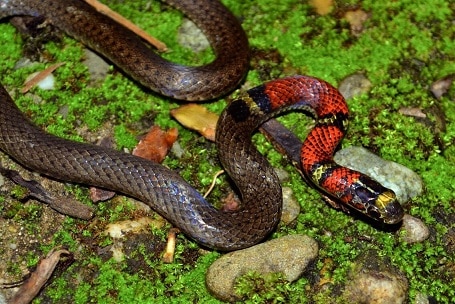
A non-venomous species of Belize, Honduras and Guatemala, which is named for the bloody red scarf around its neck. Guatemala neckband snakes (Scaphiodontophis annulatus) reach a maximum of 92cm, and are most common on the floors of humid, sticky forests. This species is a cunning hunter, as their strategy is to bury themselves completely in fallen leaves and rotting forest mulch. Then they poke just their head and neck out, and wait patiently for prey to wander past.
This harmless snake also inhabits manmade crop fields, such as banana and coffee plantations. Scaphiodontophis annulatus eats other reptilian prey such as blackbelly centipede snakes, but its diet consists overwhelmingly of skinks, particularly one species: the brown forest skink (Scincella cherriei). Another Guatemala neckband snake coughed up a reptile egg measuring 5mm.
This Belize snake has the gift of a long tail, making up 41-49% of their body length in males. But this comes with a price of fragility, as in one study, 60-70% adults observed in the wild had a broken tail. This is a non-venomous snake which has no power to send you to the afterlife.
| 2 | Clelia clelia |
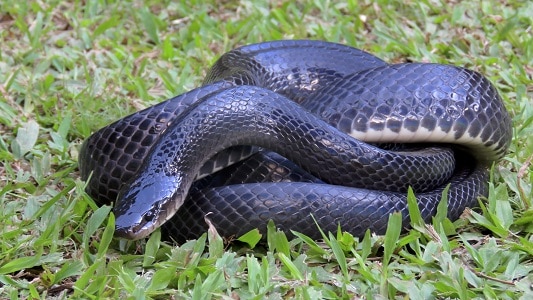
A widespread snake in Central and South America, ranging from southern Mexico through all 7 Central American nations, before ending only in southern Brazil. Clelia clelia lives mainly in forests, and reaches a record length of 275cm. They move during both day and night, and are most commonly sighted during overcast conditions immediately after heavy rainfall.
The most famous feature of Clelia clelia is its diet, which mostly consists of other snakes, including venomous killers such as the fer-de-lance. Its venom toxins are geared strongly towards paralysis, instantly disabling the threat, but even if their venomous prey did bite, Clelia clelia has natural immunity flowing through its bloodstream.
Clelia clelia has such a taste for fellow snakes that villagers often allow them to live near their homes, as a natural guardian. The Instituto Butantan, one of Brazil’s largest antivenom milking factories, has even built a large statue of Clelia clelia outside its walls as a thanks.
Fortunately, their own venom is only a minor threat in humans, and Clelia clelia has a calm personality, with no instinctive terror when it sees a farmer or tourist approach. They also have a slight iridescent sheen. Dating is brutal for this snake, as in captivity, females will sometimes eat the males attempting to woo them.
| 3 | Red coffee snake |
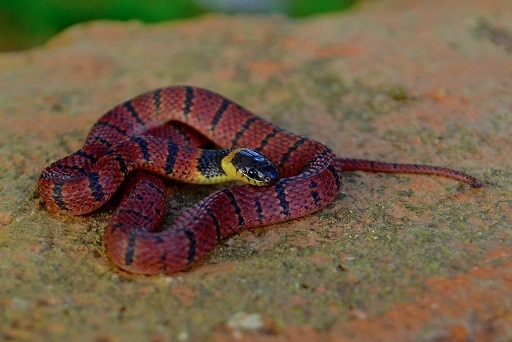
A relative of the Hudson’s coffee snake living in Ecuador. Red coffee snakes (Ninia sebae) do indeed live in coffee plantations, and the fearful workers there often kill them, assuming them to be coral snakes. This snake has several names in Spanish. Basurera translates to “hanging out in the rubbish”, while “dormilona” means sleeper, referring to their tendency to stay completely still when spooked, hoping that you’ll walk past.
Red coffee snakes range from Mexico in the north to western Panama in the south. They’re an extremely small snake, with an all time record of just 38.6cm. This is a brick red snake, with the sole exception of the neck and top of head.
Their small size attracts hungry predators, and Ninia sebae seems to taste particularly great for coral snakes. Both the variable coral snake (Micrurus diastema) and Costa Rican coral snake (Micrurus mosquitensis) have been observed sucking them down. Birds also join the feeding frenzy, including a great-tailed gackle which ate one in the remnants of an old coffee field.
As well as plantations, this harmless species is found in forests, resting on giant canopy leaves or moss-covered boulders, at altitudes of 0-2200 metres.
| 4 | Central American coral snake |
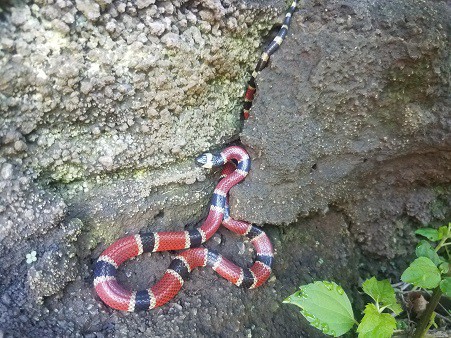
Central America is a haven of venomous coral snakes, but Micrurus nigrocinctus is the most widespread, inhabiting all 7 countries and stretching into northern Colombia. This species is so common that it also reaches several Caribbean and Pacific islands. Belize is another country that feels its wrath, although Micrurus nigrocinctus doesn’t have much wrath, as this is a calm snake which only unleashes its neurotoxic venom when harassed.
This species reaches a maximum of 115cm, with a typical length of 70-90cm. Compared to other coral snakes, it’s recognisable by a tail with no red bands, only an alternating yellow/black instead. Likewise, their face is purely black, followed by a cream-coloured neck collar.
Most coral snakes live in forests, but the Central American coral snake is more flexible. Rainforests, rocky areas, marshes and cultivated fields are all within their capabilities. Micrurus nigrocinctus has poor eyesight, and detects its prey using chemical cues instead, flecking their tongue for fellow snakes (their main prey). The harmless Costa Rican worm snake (Amerotyphlops costaricensis) is one of their confirmed meals.
A great local superstition endures about Micrurus nigrocinctus – that only the males are venomous, which explains the local Spanish name of coral macho.
| 5 | Faded black-striped snake |
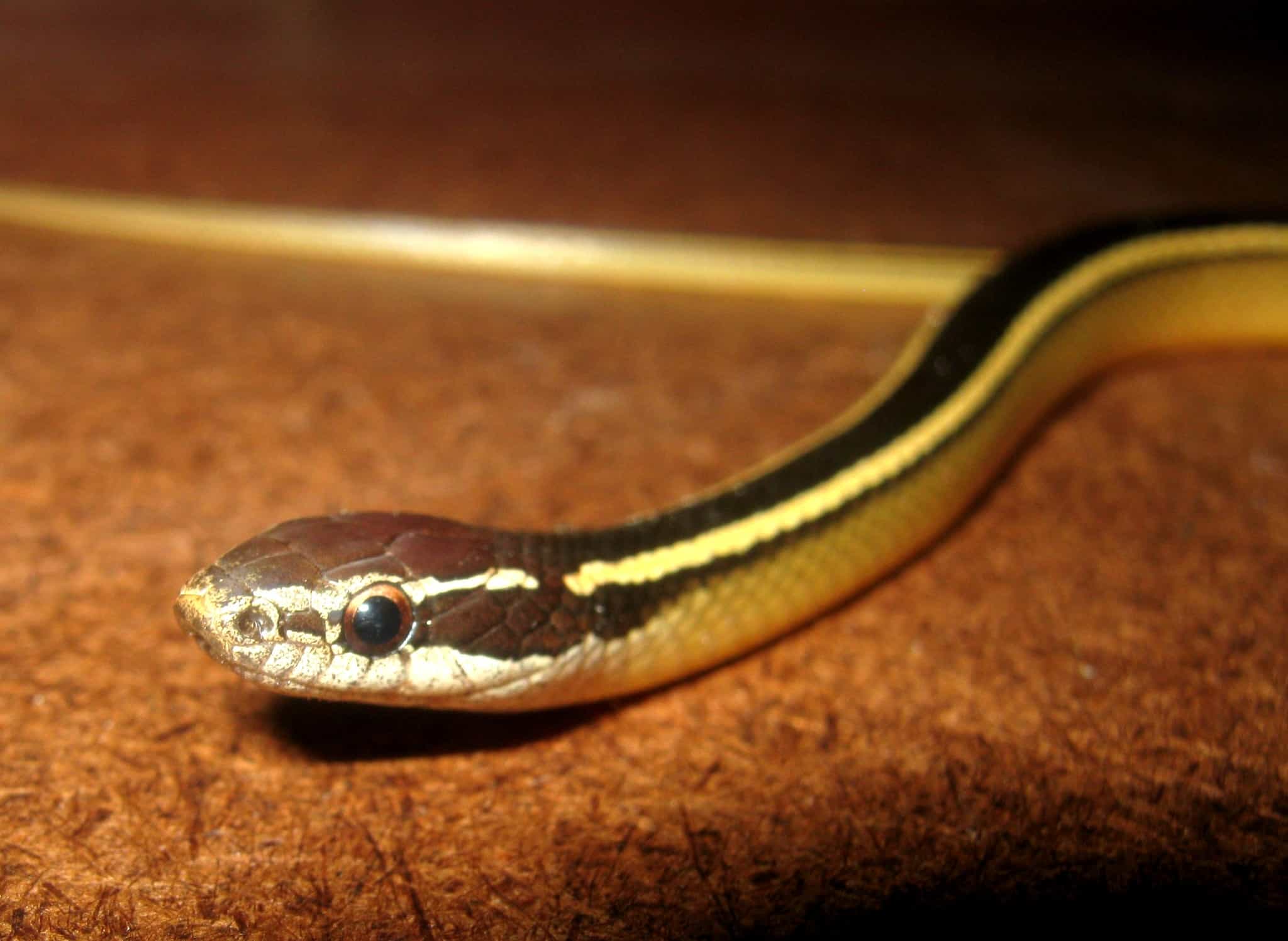
This harmless snake mostly inhabits the Yucatán peninsular of Mexico, but also Belize and small areas of Guatemala. Faded black-striped snakes prefer open areas to rainforests, and have a mild venom which rarely causes more than mild stinging. They’re commonly found along the borders of natural forests and tree plantations, but their favourite habitats are open wetlands and semi-vegetated open ground like shrubland.
This species is part of the 17 member Coniophanes family, collectively called the black-striped snakes, which first appear in southern Mexico (none in the US). They somewhat resemble a US garter snake, with a dense black stripe running down their spine, bordered on each side by a yellow line.
Faded black-striped snakes are generally 40-50cm, and have numerous confirmed prey species. Amphibians seem to be the favourite, including the common toad (Incilius valliceps) and veined tree frogs. But they also prey on reptiles such as banded geckos, and the eggs of brown anoles.
From a distance, the faded black-striped snake looks gentle, but zoom in close and you’ll notice how aggressive their facial expressions can be. When 38 of this species were gathered from museum storage, the longest measured 59.4cm with the tail excluded. For some reason, they didn’t give tail lengths, but this means that the longest most likely reach 65-70cm at least.
| 6 | Rainforest hognosed pitviper |
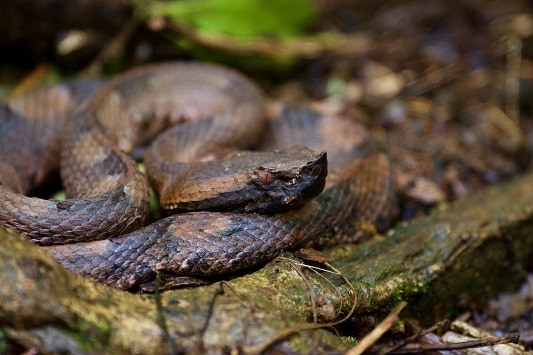
This venomous Belize snake is one of the stubbiest, fattest vipers in any country. Adults measure a mere 40cm, with 65.3cm as the absolute record. The rainforest hognosed pitviper (Porthidium nasutum) appears in 6 out of 7 central American countries, skipping only El Salvador. They stick mainly to rainforests, grinding along the mulchy forest floor rather than ascending branches (as they’re far too bulky). Your best chance to see them is by wandering along trails, searching at the bases of thick trees.
With these trees accumulating a thick layer of fallen leaves, Porthidium nasutum can be very difficult to spot – a cunning vertical pupil might be the only indication. Porthidium nasutum is an ambush predator which can remain in the same spot for at least two weeks. Their diet consists of lizards and mammals, with one popular prey being spiny pocket mice.
Rainforest hognose pitvipers can eat prey at least 129% of their own body weight. They lay high numbers of young, sometimes up to 36, and several fatalities have been recorded from their bite. With a constant presence in forests, bites are quite common, but usually moderate in severity, restricted to agonising local symptoms. Porthidium nasutum dislikes water, and will move to a new location if heavy rains flood the ground.
| 7 | Yucatán white-lipped snake |
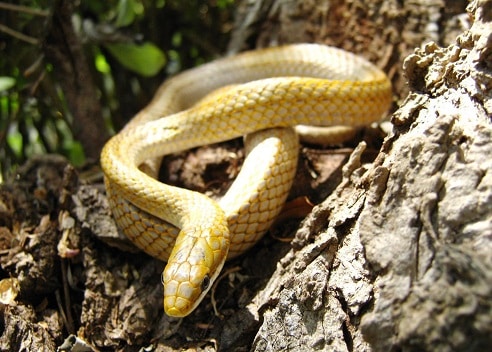
A harmless snake with very little research to its name. Symphimus mayae mainly lives in Mexico’s Yucatán peninsula, but also an isolated area in central Belize. They prefer drier habitats, including dry thorn forests and oak hammocks within dry, lowland marshes.
Yucatán white-lipped snakes reach a maximum of 91cm, and are a very pale species. Coincidentally, or not so coincidentally, this happens to match the exact branch colour in the dry forests where they reside. Their width is also a perfect double, and hence, many wildlife fanatics might walk right past this snake without knowing.
Yucatán white-lipped snakes seem to have a steady temperament, and don’t dart away as quickly as some species. Their diet consists of grasshoppers and bush crickets. Larger ones eat stick insects, and the very largest (over 42cm excluding the tail) can swallow mantids. Their best ID feature is their signature lip, which can be either pale yellow or white, contrasting against a darker yellow head. This Belize snake has round, black pupils and a particularly long head (4.7% of its body length).
| 8 | Pygmy snail sucker |
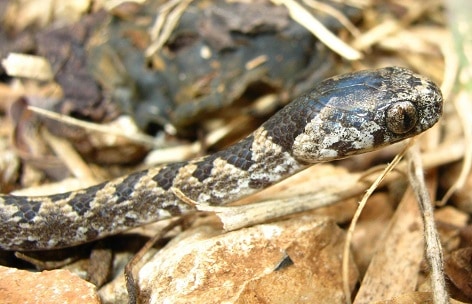
A harmless species which loves to eat slugs and snails, and is itself eaten by coral snakes. Geophis sanniolus was originally placed in the Sibon snail-eater family, but then switched to the enormous Geophis family (53 members) based on genetics. They’re a relatively common snake in Belize, which inhabits forests, but isn’t too picky about them. They’re also found in Mexico’s Yucatan peninsular and small areas of Guatemala.
Pygmy snail suckers are a tiny snake, averaging at 20-40cm. They’re fairly flexible, manifesting in dry thorn forests, semi-deciduous forests, forests degraded by mankind, and artificial tree plantations alike. They can also be found on vegetation bordering roads, and even near houses occasionally.
This snake’s eyes are particularly amazing. Rather than smoothly orange or grey, its irises have extremely complex colours, like an old piece of tree bark. You half expect a woodlouse or millipede to crawl out of them. Their eyes are also unusually large, with bulging vertical pupils.
Its body patterns, meanwhile, are more like a viper, with parched beige alternating against dark brown in zigzagging blotches. The pygmy snail sucker lays 2-5 eggs which hatch during the rainy season.
| 9 | Salmon-bellied racer |
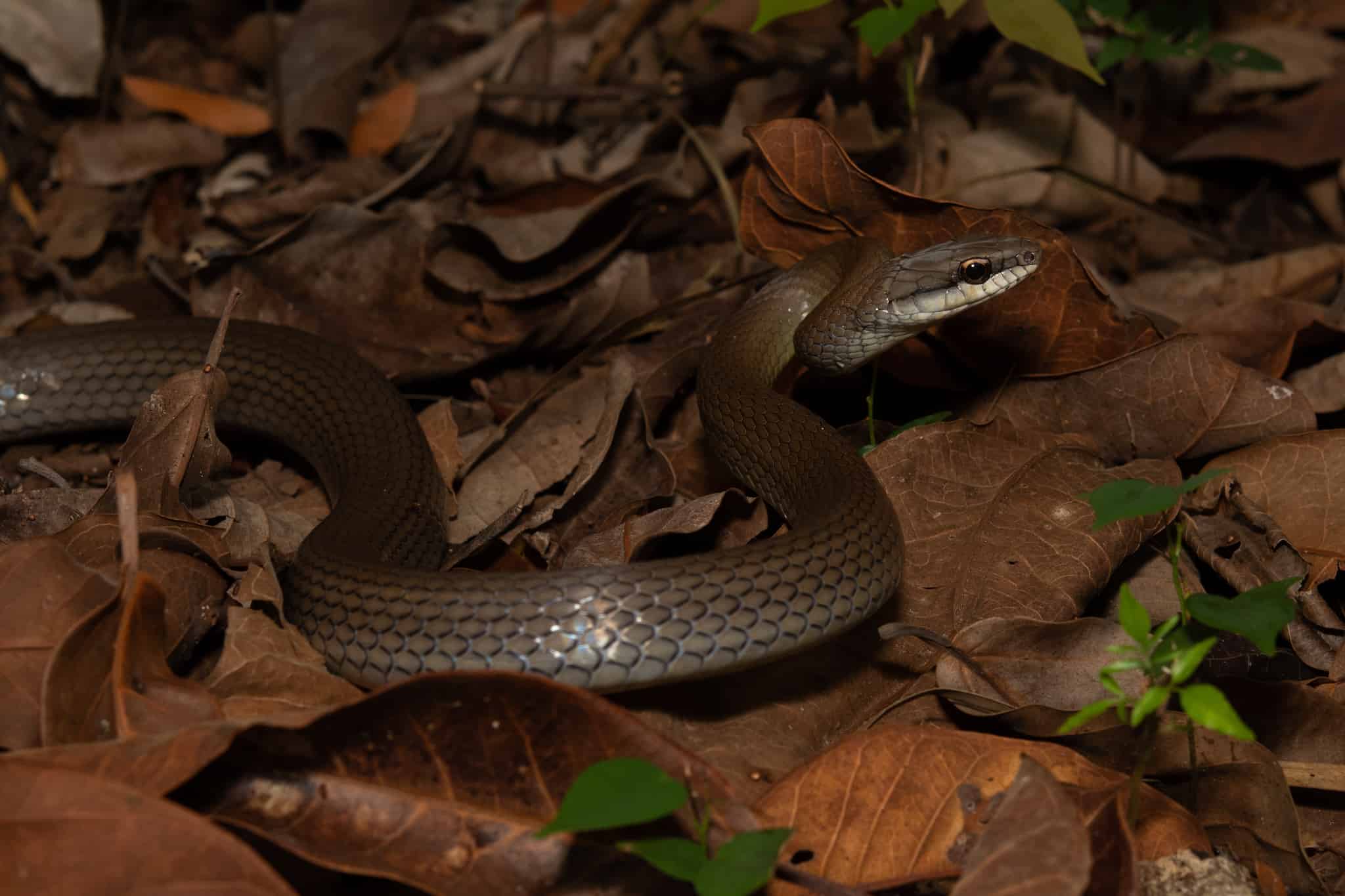
One of Belize’s most adventurous and confident snakes. Salmon-bellied racers reach a maximum of 140cm, and are a fast-moving snake which slithers around inquisitively while flecking its tongue virtually non-stop.
This species appears from eastern Mexico to central Panama. The concept of habitat is a complete joke to them, as salmon-bellied racers slither freely through fields, streets, back gardens, and forests without worrying. They’re also excellent climbers, and gather themselves comfortably on branches several metres high.
Salmon-bellied racers take their pick from multiple animal classes, including mammals, reptiles and birds. The many-lined whiptail is one confirmed prey. Though non-venomous, salmon-bellied racers have an aggro personality, and will snap viciously at the slightest provocation.
This species is easily identifiable by its bright orange belly, which contrasts vividly with an oily black body. There are also slight hints of orange visible between the scales. Salmon-bellied racers metamorphosize with age, as younglings have checkered patterns of constantly alternating black and white. In adulthood, these colours fuse together into a single smooth black.
| 10 | Cloudy snail-eating snake |
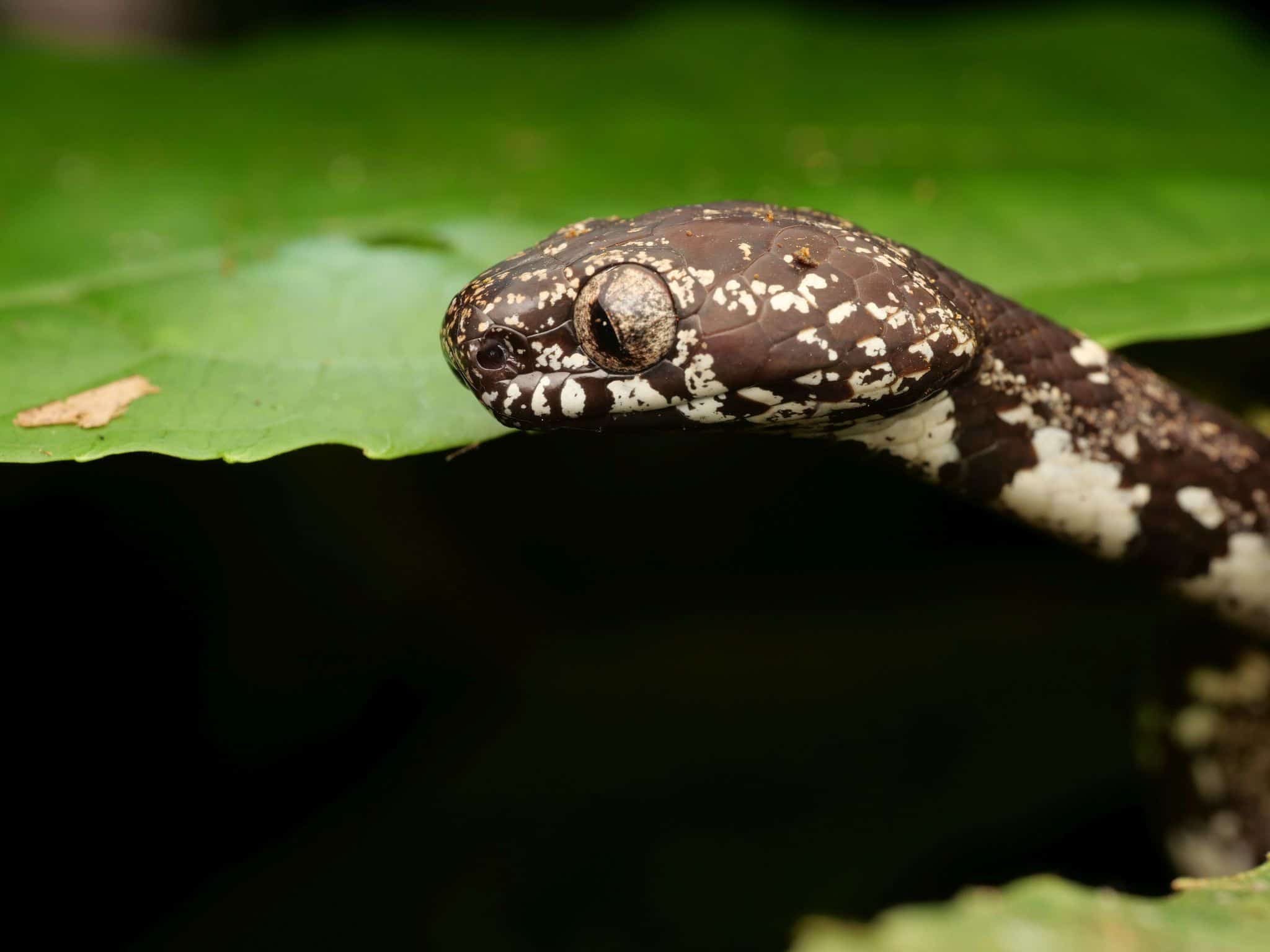
A member of the Sibon snail-eating family, and easily one of the most widespread. Sibon nebulatus ranges from Ecuador through to Mexico, overlapping with several related species like Sibon longifrenis.
Cloudy snail eaters measure 50-70cm (maximum 101.3cm), and mainly live in forests, usually on branches or in leaf litter. They locate prey using eyesight first, before slithering towards them in a completely straight line. The closer they get, the more tongue flecking for scents takes over from vision.
Sibon nebulatus has an abysmal strike distance, only lunging when 0.5-2cm away from its snail prey. Their next step is searching for irregularities on the ground which they can snag the shell on. Once secure, they then spend several minutes probing into the shell, using the new leverage to suck the snail’s body free.
Their strategy for slugs is very different, as Sibon nebulatus first seizes them by their slimy tail. Then they raise their head high in the air, and use gravity to slurp them down. Once complete, Sibon nebulatus rubs its head repeatedly against the ground to wipe away the sticky slug mucous. This snake has an unusually large head relative to its neck, and its scales are the colour of rotting wood.
